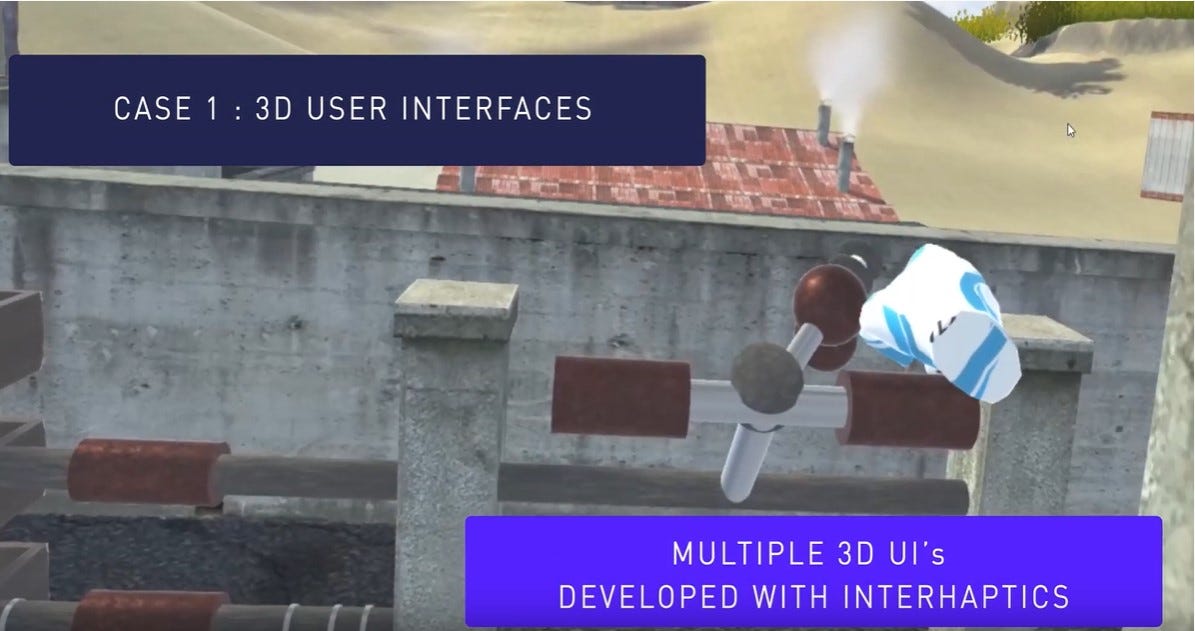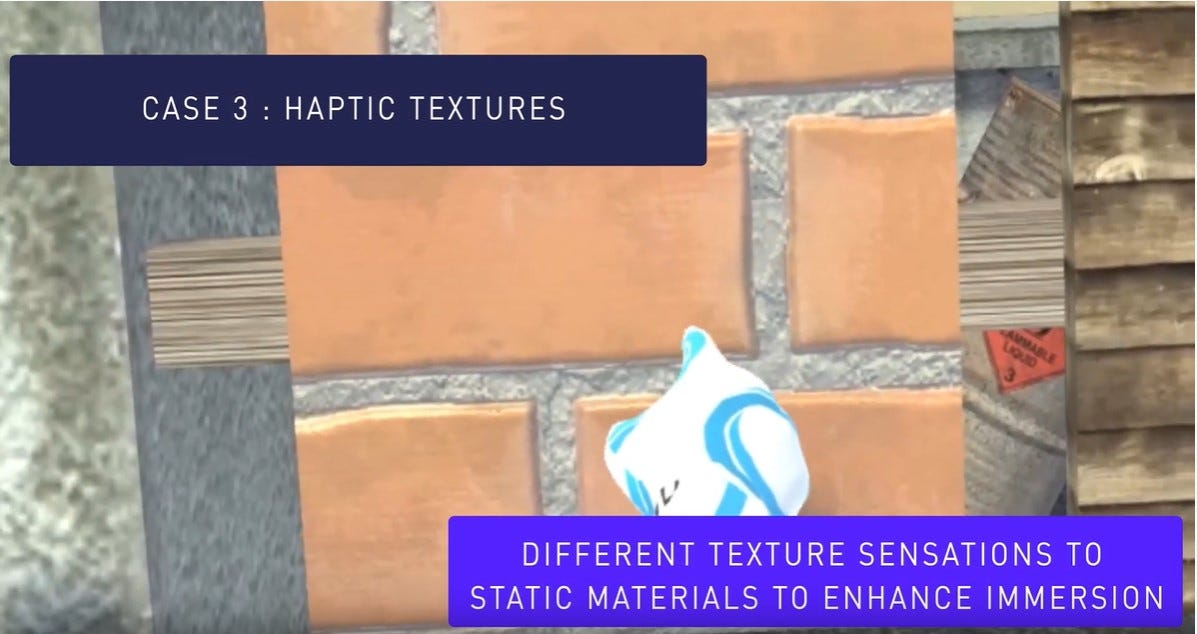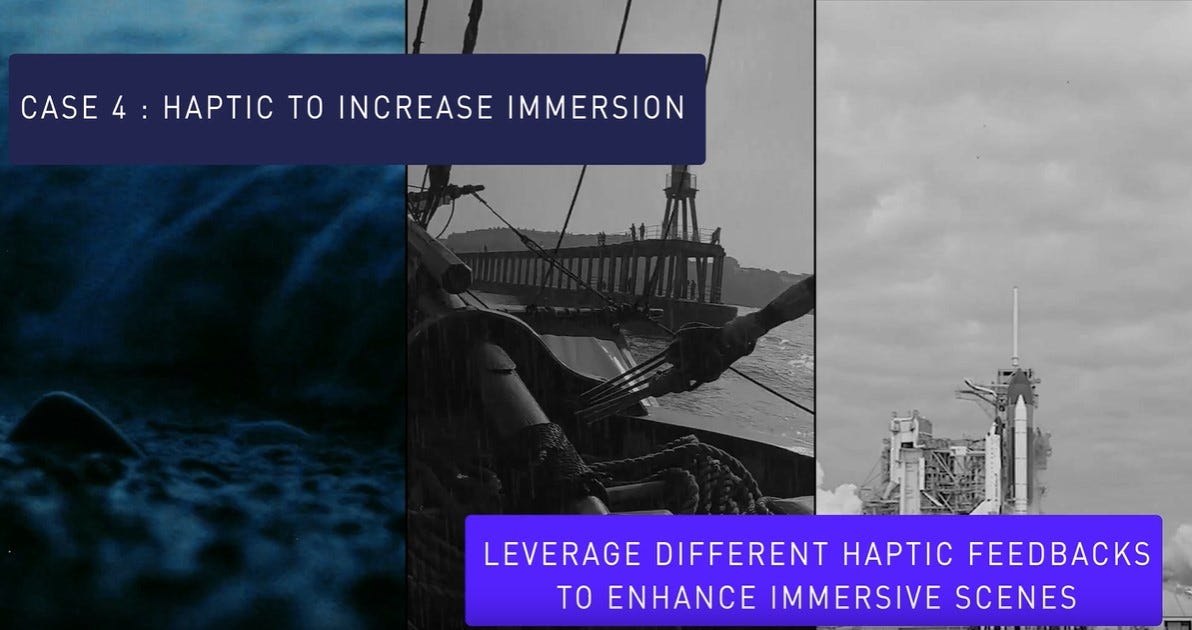
Interhaptics allows to design and develop complex 3D interactions and haptic feedback without any coding knowledge. With Interhaptics, which focuses on haptics for VR/AR/MR, you will be able to build and create haptic sensations for 3D applications. Indeed, to immerse ourselves directly into an VR/AR/MR experience, we need to experience this reality with all our senses.
The haptics demo
Our team created a demo (watch video) to showcase a large spectrum of VR/AR/MR experiences. More specifically, using Interhaptics, we built a demo to showcase specific applications of haptics for VR/AR/MR. The demo is highlighting how haptics enhances immersive content in different use cases. The haptics demo is composed of 4 panels demonstrating how haptic feedback changes the experience in VR/AR/MR.
Haptics for VR/AR/MR interaction: the first panel
In the first panel, haptics is used to enhance UI’s objects. Here we will find levers, drawers, sliders and wheels. Each case is presented with three types of haptic feedback to enhance different aspects of the interaction. In this context, haptics for VR/AR/MR contributes to enhance immersion and refine the sensation of the user interacting with the 3D environment.

Haptic objects: the second panel
The second case shows how haptic feedback can enhance the interaction with ordinary objects. Haptics creates an interesting and dynamic interaction without the need to animate the scene to change the object behavior. Each object is given a specific feeling, namely a haptic attribute. This allows to enhance the sensation of movement or contact, and to deliver information or convey emotions. The communication of these sensations is intimate and reflects how haptics for VR/AR/MR can enhance the immersion and sensation of presence of the users. Try out how the right haptics enhance the feeling of a beating hearth, or the sensation of a moving train. With Haptics Composer, every object can be transformed and a new channel of haptic communication added to your XR experience.

Feeling the haptic texture: the third panel
One of the most common sensations of haptics for VR/AR/MR is to feel the texture of a virtual object. The Texture panel describes this case. By using this panel, you can explore how haptics generate interesting and different experiences while interacting with static objects. There are 6 materials in the panel, and it is possible to add a different texture to each of them. The haptic experience takes inspiration from the graphic texture added to the different squares.

Haptics feelings for actions: the fourth panel
The last case explores how tailored haptic sensations enhance immersive actions. In this context, haptics for VR/AR/MR allows to enhance the feeling of a specific element of the scene. Thus, a haptic feedback mimicking the period of the wave on a boat increases the user immersion and, like sound, contributes to the experience of the user.

Creating all these cases is extremely easy and intuitive thanks to Haptics Composer. Indeed, it does not require any coding knowledge to create compelling experiences. This is because the Haptics Composer allows to simply visualize each of these cases and quickly iterate your experiences with haptics for VR/AR/MR.
Click here to test our demo now! Stay tuned for other contents which show you how the haptic feedback changes your XR experience.
Stay tuned for other contents which will show you how haptics for VR/AR/MR changes your XR experiences. Try our beta to design your haptic materials and extend your reality by downloading now our suite.






